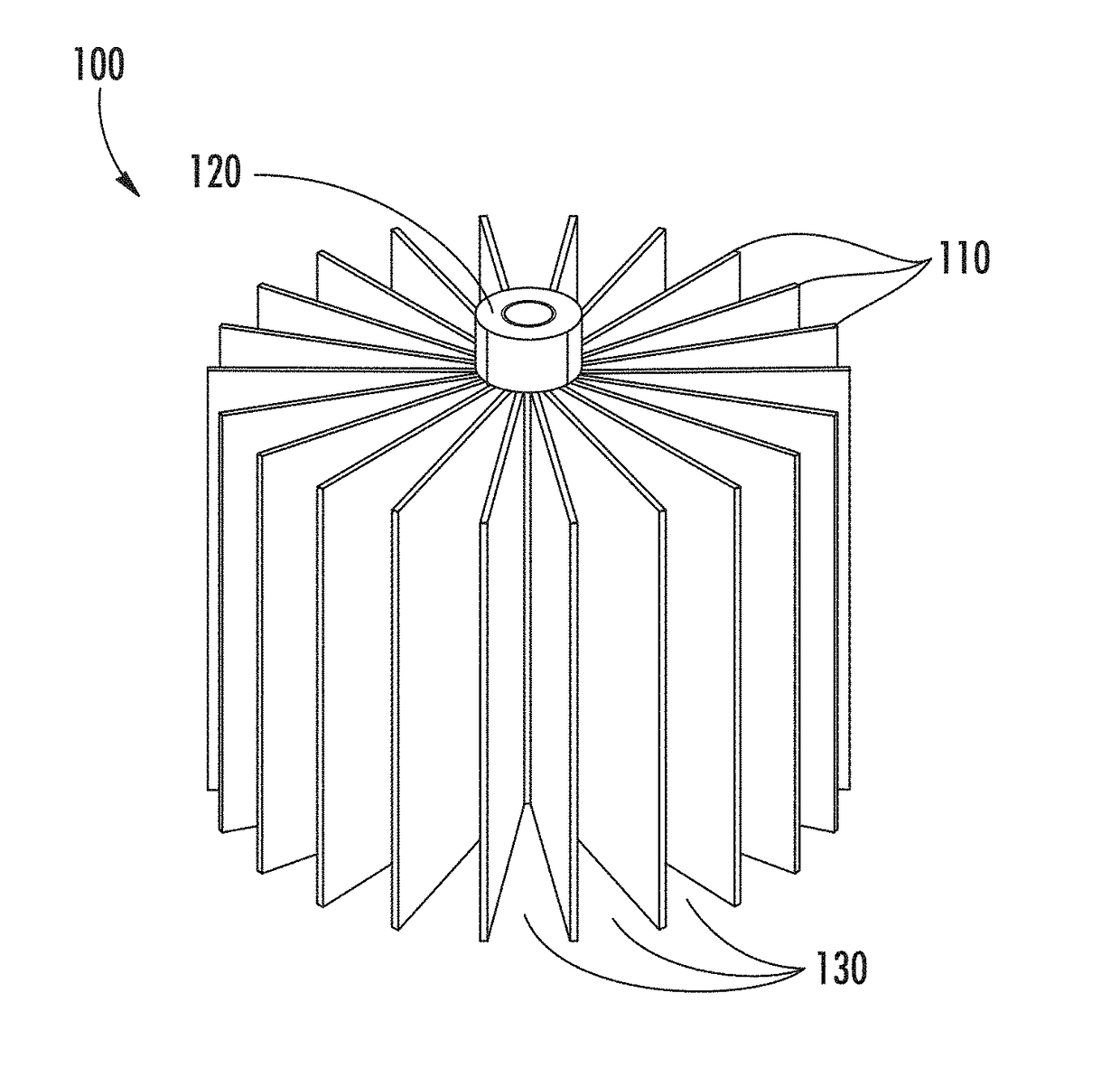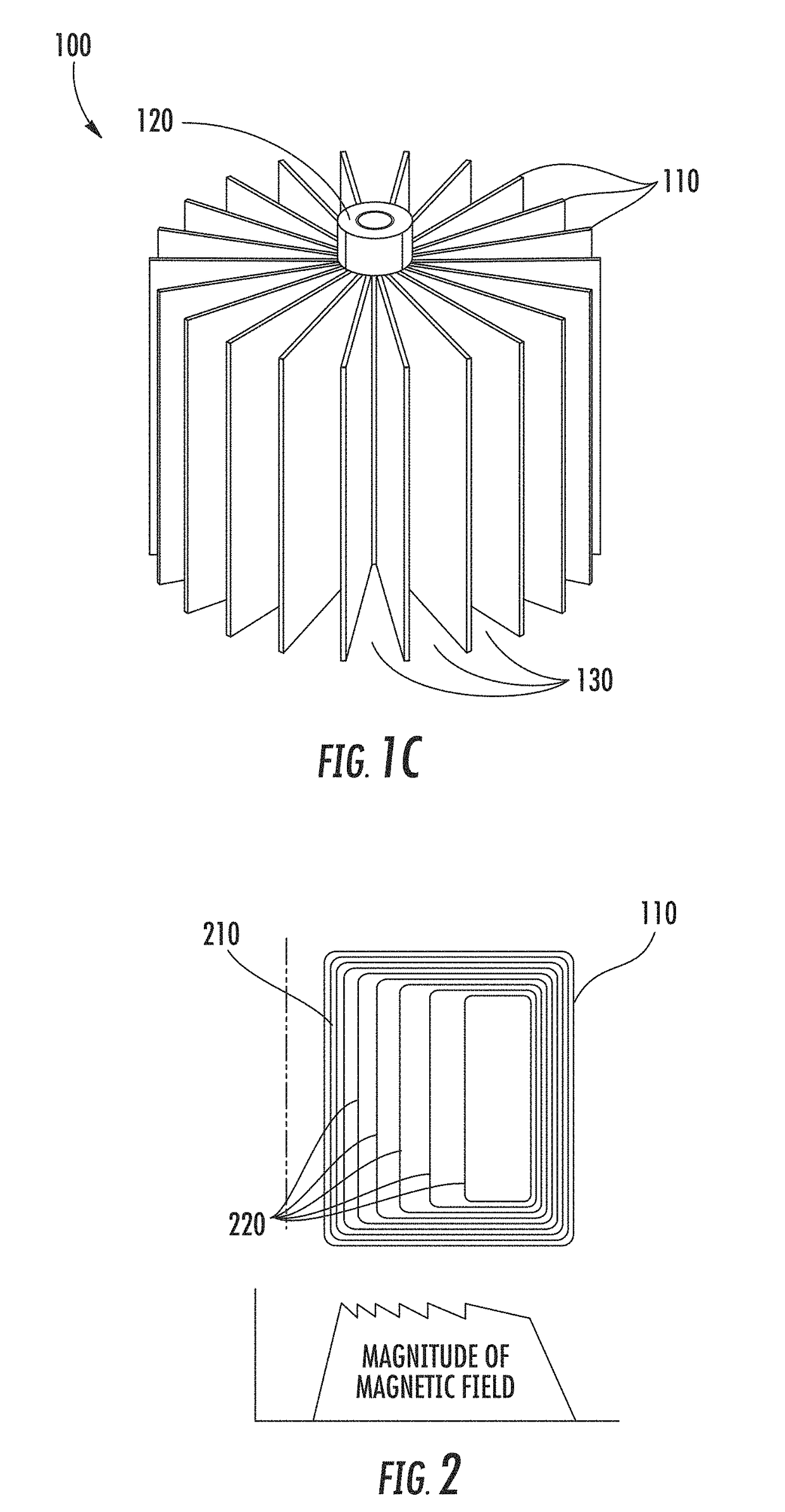Toroidal bending magnets for hadron therapy gantries
a technology of bending magnets and hadron beams, applied in radiation therapy, beam/ray focussing/reflecting arrangement, therapy, etc., can solve the problems of unfavorable beam optics, low aspect ratio, and unconsidered type of bending magnets in hadron beams, so as to reduce the overall gantry weight and the magnet system weigh
- Summary
- Abstract
- Description
- Claims
- Application Information
AI Technical Summary
Benefits of technology
Problems solved by technology
Method used
Image
Examples
Embodiment Construction
[0034]FIGS. 1A-1C show the geometry of the proposed toroidal bending magnet 100. FIG. 1A shows a view from the top of the magnet 100 (i.e. along the main axis of the torus), while FIG. 1C shows a view from the side of the magnet 100. Multiple plates 110 make the magnet 100 a toroidal bending magnet. The plates 110 may rest against a bucking cylinder 120. There are gaps 130 between the plates 110. One of these gaps 130 is used to bend the beam. Throughout this disclosure, the term “beam” is used to refer to a beam of charged particles. These charged particles may be, for example, protons, ionized elemental molecules, such as carbon, or other ionized species. Further, both positively and negatively charged particles may be used. The rest of the plates 110 contribute to the field in the gap used for bending, and to reduce the stray magnetic field. The additional magnet plates 110 are not otherwise used directly and no beam passes through the gaps 130 between them. Although it seems tha...
PUM
 Login to View More
Login to View More Abstract
Description
Claims
Application Information
 Login to View More
Login to View More - R&D
- Intellectual Property
- Life Sciences
- Materials
- Tech Scout
- Unparalleled Data Quality
- Higher Quality Content
- 60% Fewer Hallucinations
Browse by: Latest US Patents, China's latest patents, Technical Efficacy Thesaurus, Application Domain, Technology Topic, Popular Technical Reports.
© 2025 PatSnap. All rights reserved.Legal|Privacy policy|Modern Slavery Act Transparency Statement|Sitemap|About US| Contact US: help@patsnap.com



